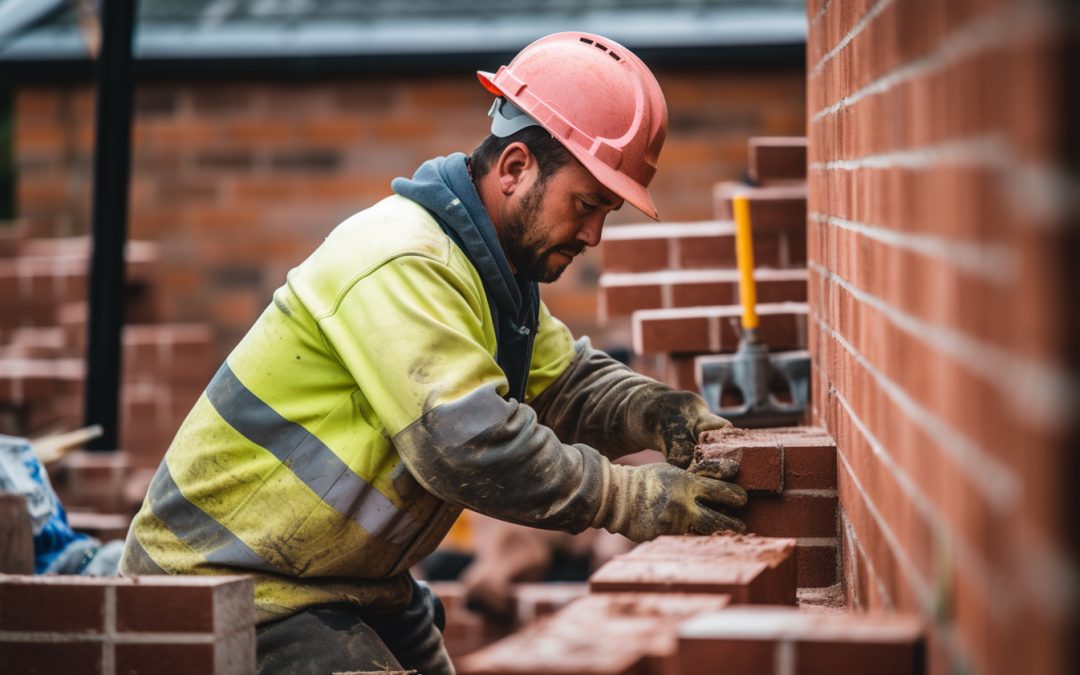In the world of new build home construction, ensuring structural integrity is paramount. A vital player in this domain is the incorporation of movement joints in brickwork, a topic well articulated by the NHBC. Here, we delve into the importance of movement joints, factors affecting masonry movement, and guidelines for implementing movement joints in new build homes, and talk about how snagging companies can play a crucial role in maintaining the aesthetic and structural appeal of masonry walls.
Understanding Masonry Movement
Masonry movement in cavity walls of new build homes is a natural phenomenon arising from various factors including expansion, contraction, and moisture-induced volume changes within the masonry units. The movement can be reversible, typically caused by temperature fluctuations, or one-way, caused by the ageing of clay bricks or concrete blocks/bricks.
Influencing Factors
Several factors contribute to the degree of masonry movement:
- Colour, Texture, and Sun Exposure: The colour and texture of the wall, along with its orientation towards the sun, affect the amount of heat absorbed by the masonry, influencing the degree of movement.
- Masonry Panel Geometry: The size, shape, and distribution of openings and restraints in masonry panels significantly impact the accumulation of stresses and subsequent movement.
Implementing Movement Joints
To manage expansion and contraction and prevent undesirable cracking, the incorporation of movement joints is essential. These joints should be meticulously constructed to accommodate the calculated movement extent without compromising the wall’s stability and weather-tightness.
Placement Guidelines
- Movement joints should ideally not align with door or window openings to avoid complications in continuing the movement joint between frames and masonry.
- It’s advisable to position vertical movement joints in sections of full height masonry between openings.
- In scenarios where a full height masonry panel is absent, the location and detailing of the movement joint should be engineered to prevent it from navigating around window and door frames.
Specifications
Movement joints should be provided at specified intervals depending on the material:
- Clay Brickwork: 10m – 12m
- Lightweight Concrete Block/Brick: 6m
- Dense Concrete Block and Brick: 7.5-9m
- Calcium Silicate Brick: 7.5-9m
For masonry in a parapet wall with a length to height ratio greater than 3:1, the spacing should be halved, and placed 1.5m from corners. Additionally, the width of movement joints for clay bricks should be no less than 1.3mm/m.
Reinforcement Measures
In cases where the length to height ratio of each panel is high (more than 3:1), reducing the distance between movement joints or employing bed joint reinforcement could be a viable solution to control stresses. Any reinforcement should align with the manufacturer’s guidelines.
Further Guidance
For more in-depth understanding and technical insights, refer to NHBC’s Technical Guidance 6.1/14 ‘Movement joints in clay brick masonry’ and Technical Guidance 6.1/16 ‘Masonry bed joint reinforcement’.
Understanding and effectively implementing movement joints is crucial for the longevity and aesthetic allure of new build homes. Snagging companies play a pivotal role in ensuring these guidelines are adhered to, paving the way for safer, more durable homes in the UK.




